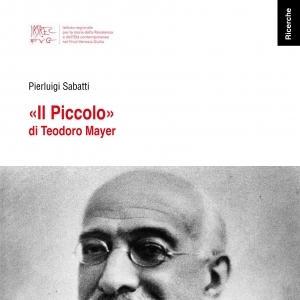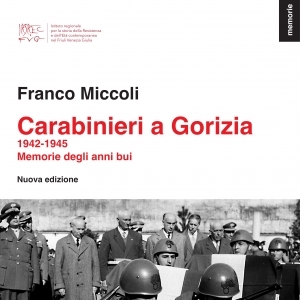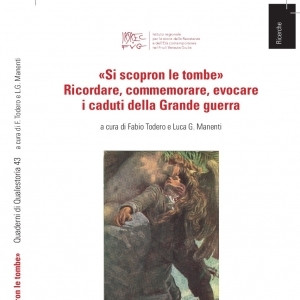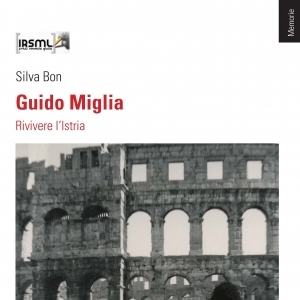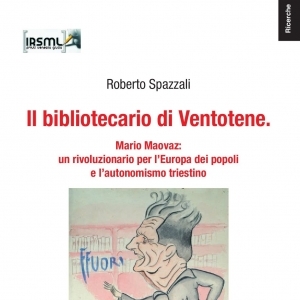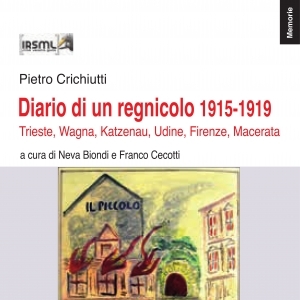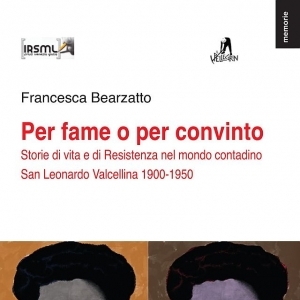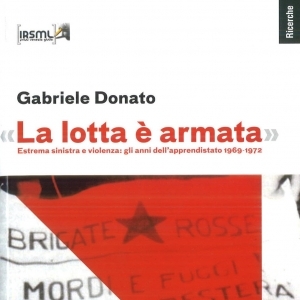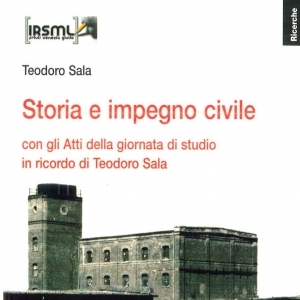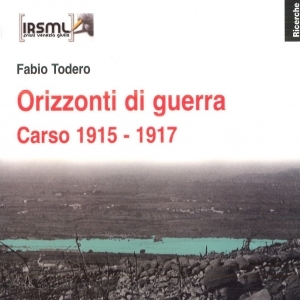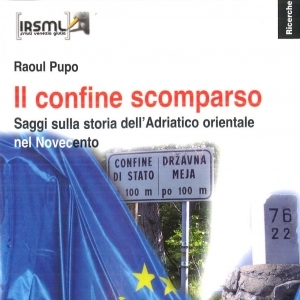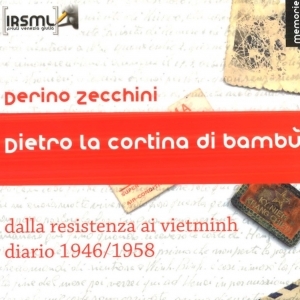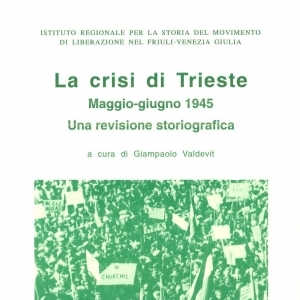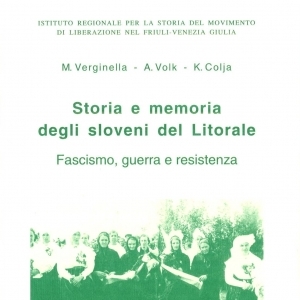Il mondo cattolico e la Terra Santa nel Novecento: sionismo, nazionalismo arabo, difesa dei diritti cristiani
a cura di Tullia Catalan e Paolo Zanini

Qualestoria, anno XLV, N.ro 2, Dicembre 2017
Il mondo cattolico e la Terra Santa nel Novecento: sionismo, nazionalismo arabo, difesa dei diritti cristiani
a cura di Tullia Catalan e Paolo Zanini
Indice e autori
| Tullia Catalan | Introduzione | 7 | ||
| Studi e Ricerche | Studies and researches | |||
| Lucia Russo | Tra conferimento e approvazione del mandato. Due anni di controversie anglo-vaticane (1920-1922) - From the appointment of the British Mandate on Palestine and its approval (1920 -1922). Two years of anglo-vatican debate | 11 | ||
| Elena Mazzini | I testi di viaggio dei pellegrini italiani in Terra Santa nei primi anni del Novecento - The travel books of Italian pilgrims to the Holy Land in the early twentieth century | 31 | ||
| Paolo Pieraccini | Il Patriarcato latino di Gerusalemme, la Santa Sede e il sionismo di fronte alla prima traduzione dei Protocolli dei savi di Sion in lingua araba (1925-1926) - The Latin Patriarchate of Jerusalem, the Holy See and the translation in Arabic of The Protocols of the Elders of Zion | 51 | ||
| Paolo Zanini | I cattolici italiani e la questione della Palestina, tra aspetti religiosi e proiezioni nazionali (1922-1948) - The Italian Catholics and the Question of Palestine, between Religious and National Claims (1922-1948) | 83 | ||
| Maria Chiara Rioli | «In quella striscia di Palestina che oggi si chiama stato d’Israele». La Chiesa latina di Gerusalemme di fronte a Israele - «In that strip of Palestine today called State of Israel». The Latin Church of Jerusalem facing the foundation of Israel | 101 | ||
| Gli autori di questo numero | 119 | |||
Tullia Catalan, è ricercatrice di Storia contemporanea presso il Dipartimento di Studi Umanistici dell’Università di Trieste, dove insegna Storia contemporanea e Storia dell’Ebraismo. Le sue ricerche si sono focalizzate sulla storia dell’ebraismo italiano nei suoi rapporti con la società non ebraica fra Ottocento e Novecento, con particolare attenzione al tema dell’antisemitismo. E’ componente del comitato di redazione della rivista «Quest: Issues in Contemporary Jewish History» della Fondazione CDEC di Milano. Fra le sue pubblicazioni più recenti Italian Jews and the 1848-49 Revolutions: Patriotism and Multiple Identities, in The Risorgimento Reviseted: Nationalism and Culture in Nineteenth-Century Italy, a c. di S. Patriarca, L. Riall, Palgrave Mac Millan, New York pp. 214-231; Les juifs italien et le Risorgimento: un regard Historiographique, in «Revue d’Histoire du XIXe siècle», n. 44, 2012, pp.127-137; The Jews and the Nation-States of Southeastern Europe from the 19th Century to the Great Depression. Combining Viewpoints on a Controversial Story, a c. di T. Catalan, M. Dogo, Cambridge Scholar Publishing, 2016; La Journéè de la Mémoire en Italie: le rôle des institutions entre centre et péripherie (2000-2013), in «Revue d’Histoire de la Shoah», n. 206, 2017, pp. 85-105.Gli autori di questo numero
Elena Mazzini ha conseguito il dottorato di ricerca in Storia contemporanea all’Università degli Studi di Firenze. Dopo il post-dottorato alla Scuola Normale di Pisa, ha usufruito di assegni di ricerca presso la medesima istituzione. Autrice di monografie ed articoli apparsi su riviste nazionali e internazionali, è attualmente docente a contratto di Storia contemporanea presso l’Università degli Studi di Firenze.
Paolo Pieraccini, è dottore di ricerca in Storia delle relazioni internazionali presso la Facoltà di Scienze Politiche «Cesare Alfieri» dell’Università di Firenze e in Diritto presso la Facoltà Jean Monnet dell’Università Paris Sud. Ha pubblicato diversi volumi sulla storia di Firenze, sulla questione di Gerusalemme, sul cattolicesimo palestinese e su quello cipriota. È anche autore di numerosi saggi sulla politica dell’Italia, della Francia, della Gran Bretagna e della Santa Sede verso la Palestina, sulla questione dei luoghi santi e sugli aspetti diplomatici, giuridici, religiosi e archeologici del conflitto israelo-palestinese. Nel gennaio 2011, sollecitato dalla Custodia di Terra Santa, è passato alle sue dipendenze per dedicarsi alla continuazione della Biblioteca bio-bibliografica della Terra Santa e dell’Oriente francescano. Il suo ultimo volume l’ha dedicato all’attività scientifica del fondatore di questa collana, Girolamo Golubovich (2016).
Maria Chiara Rioli è ricercatrice post-doc presso l’Università di Paris-Est Marne-la-Vallée e segretaria scientifica e amministrativa del progetto ERC «Open Jerusalem». Tra le sue pubblicazioni Tribulationis tempore. The Catholic Diocese of Jerusalem and the First Arab-Zionist War (2018, in corso di pubblicazione); The «New Nazis» or the «People of our God»? Jews and Zionism in the Latin Church of Jerusalem, 1948-1962, in «Journal of Ecclesiastical History», vol. 68, n. 1, 2017, pp. 81-107. Ha curato il volume Ritornare a Israele. Giorgio La Pira, gli ebrei, La Terra Santa (Pisa 2015).
Lucia Russo, laureata in Scienze Politiche, indirizzo internazionale, consegue un Dottorato di ricerca in Storia contemporanea presso l’Università degli Studi di Salerno, con una tesi sull’atteggiamento della Santa Sede rispetto alla questione palestinese durante gli anni del mandato britannico. Sullo stesso tema ha scritto sulla rivista «Ricerche di Storia Sociale e Religiosa». É membro dell’Associazione per la Storia sociale del Mezzogiorno e dell’Area mediterranea di Potenza.
Paolo Zanini è ricercatore in Storia contemporanea presso il Dipartimento di Studi storici dell’Università degli Studi di Milano. I suoi principali ambiti di ricerca riguardano la questione della libertà religiosa nell’Italia del Novecento; il mondo cattolico italiano progressista nel secondo dopoguerra; la politica mediorientale della Santa Sede; l’atteggiamento del mondo cattolico italiano e internazionale di fronte al sionismo e alla nascita dello Stato d’Israele.
Abstracts
From the appointment of the British Mandate on Palestine and its approval (1920 -1922). Two years of anglo-vatican debate.
di Lucia Russo
The objective of this work is to analyse the Holy See's attitude in the two-years from the Sanremo Conference, in the April 1920, when the Mandate for Palestine was appointed to Great Britain, and its approval, in July 1922. The Pope was deep concerned for the protection of the Arab-Catholic communities in the Holy Land and for Jerusalem and the Holy Places of Christianity, because of Great Britain support of Zionism and the Protestant and schismatic churches.
Within the international debate on political order in Palestine, we analyze Vatican relations with the British government and Catholic Church attitude towards Zionism, through investigation of Vatican archival collections and the main sources of the Catholic press. The aim is to discover how much weight did the theological factor have on Vatican opposition on British draft Mandate for Palestine.
Keywords: Holy See, Zionism, Anti-Semitism, Palestine, British Mandate
Parole chiave: Santa Sede, Sionismo, Antisemitismo, Palestina, Mandato britannico
The travel books of Italian pilgrims to the Holy Land in the early twentieth century
di Elena Mazzini
The article analyzes some of the many testimonies written by Italian pilgrims visiting the Holy Land between the Balfour Declaration (1917) and the promulgation of the conciliar declaration Nostra Aetate, dedicated to the relations between the Catholic Church and non Christian religions. Such an extended time frame allows to achieve two goals. The first is to identify the linguistic transformations in this literary corpus in regards to the representation of the Middle Eastern world through the travel books written by Christian pilgrims, a source so far unused. The second goal concerns the perception that the Catholics had of Judaism in its historical, political and religious dimension, and how these have changed over the decades. By analyzing the linguistic, cultural and ideological frames used in these travel accounts to describe the complex Palestinian reality first, and the Israeli one after, it will be possible to adopt a different perspective.
Keywords: Holy Land, Christian pilgrimage, Travel books, Anti-Judaism, Orientalism
Parole chiave: Terra Santa, pellegrinaggio cristiano, testi di viaggio, antiebraismo, orientalismo
The Latin Patriarchate of Jerusalem, the Holy See and the translation in Arabic of The Protocols of the Elders of Zion.
di Paolo Pieraccini
The aim of this article is to investigate the spread into British Palestine of one of the most virulent Anti-Semitic pamphlets: The Protocols of the Elders of Zion. To this end, this essay focuses on both local and global issues, bringing to light some aspects of the life and organization of the Latin community in Jerusalem during the early years of the British mandate. On the 5th of January 1926 the official magazine of the Latin Patriarchate, the «Raqib Seyon», published a review of the Arab translation of The Protocols of the Elders of Zion, underlining that this book was «worthy to be read by all the Arabs» because it «shows the bad intentions of the Zionists». The Zionist leaders tried to secure a denial from the Holy See and a Vatican declaration denouncing the falsity of The Protocols. The whole issue was directly manged by the World Zionist Organization which establish many channels of communication with the Vatican. The Jewish American association also entered into this controversy, asking that the Vatican distance itself from the review. Despite this strong campaign, the Catholic press remained silent, and the Latin Patriarchate decided to close the «Raqib Seyon» without any explanation.
Key words: The Protocols of the Elders of Zion; Latin Patriarchate of Jerusalem ; Catholic Press; Translation in Arabic
Parole chiave: Protocolli dei savi anziani di Sion, Patriarcato latino di Gerusalemme, stampa cattolica, traduzione in arabo
Abstract - The Italian Catholics and the Question of Palestine, between Religious and National Claims (1922-1948)
di Paolo Zanini
During the British mandate in Palestine, the Italian Catholics campaigned for greater involvement by Italy in the region’s politics. To achieve this, the religious factors, linked with the necessity to guarantee Catholic rights to the Holy Places and the life of Catholic communities, were often used to reinforce Italian political ambitions. This policy was actively pursued before 1922, the year of the official establishment of the British mandate. Even after this, these issues continued to draw attention, gaining more importance during the periods of crisis such as the disturbances of 1929, the great Arab revolt (1936-1939) and at the beginning of the Second World War. In the same way, during the first Arab-Israeli war, in 1948, the Franciscan Delegation of the Holy Land in Rome promoted a campaign to form a so called «militia» to safeguard the Palestinian sanctuaries and protect Italian interests in the region.
The aim of this article is to investigate how these national-religious attitudes changed over the tumultuous period of the British mandate, trying to understand if these campaigns had any influence on Italian policy in that region.
Key words: Italian Catholics; Palestine; Holy Places; Italian influence in the Middle East
Parole chiave: cattolici italiani, luoghi sacri, influenza italiana nel Medio Oriente
Abstract - «In that strip of Palestine today called State of Israel». The Latin Church of Jerusalem facing the foundation of Israel
di Maria Chiara Rioli
My contribution aims to analyse the variety of reflections that matured within the Roman Catholic Church in the years marked by the establishment of the first Arab-Zionist war and the establishment of the Israeli State. If the historiography has generally focused on the Holy See-Israel relations, still largely unexplored remains the dialectic between the newborn Jewish state and the local Church, particularly the Patriarchate of Jerusalem and the Franciscan Custody of the Holy Land. The analysis of unpublished archival sources retraces the composite image of a Church which is related to new realities through the restatement of the categories that hitherto had defined the traditional Catholic hostility to Zionism and the ambiguous support to the Arab world. In this context, there are also new elements and partial ruptures: an example of this transformation is the St James association within the Patriarchate which at the beginning of the Fifties opens a reflection on the pastoral assistance to Jews converted to Christianity and the theological significance of the foundation of the State of Israel. The study of these contrasting tensions within the same ecclesiastical horizon provides insights into the following religious and political transformations after the Second Vatican Council and the Six Day War.
Keywords: Latin Patriarchate of Jerusalem, Israel, Roman Catholic Church, Eastern Christians, Israeli-Palestinian Conflict
Parole chiave: Patriarcato latino di Gerusalemme, Israele, Chiesa cattolica romana, cristiani d’oriente, conflitto israelo-palestinese






